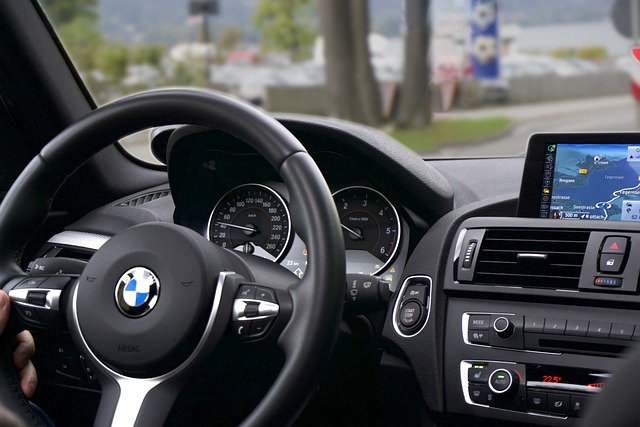Learn how to register your car in California with our comprehensive guide. This step-by-step process covers everything from understanding the requirements to gathering essential documents for a successful DMV VIN verification. We walk you through each stage, ensuring a smooth experience. By following these instructions, you’ll be on your way to securing your vehicle’s registration quickly and accurately. Optimize your car registration journey with our expert tips, avoiding common mistakes along the way.
- Understanding the California Car Registration Process
- Gather Required Documents for DMV Vin Verification
- The Step-by-Step Guide to Registering Your Vehicle
- What Happens After Successful DMV Vin Verification?
- Common Mistakes to Avoid During Car Registration in California
Understanding the California Car Registration Process

Understanding the California Car Registration Process
Registering a car in California involves several crucial steps, beginning with accurate and complete documentation. The process starts at the California Department of Motor Vehicles (DMV), where you’ll need to present essential paperwork, including proof of ownership, identification, and current vehicle insurance. A key part of this initial phase is the DMV’s vin verification, which ensures all details related to your vehicle match those on record. This step includes a comprehensive check of the vehicle identification number (VIN) to verify its authenticity and history.
Once your documents are in order, you can proceed with scheduling a mobile vin inspection if preferred. Many residents opt for this convenience, allowing a DMV representative to conduct the necessary checks at your location. Alternatively, you can visit one of the many DMV offices across the state. Throughout this process, it’s essential to remain organized and ensure every form is filled out correctly to avoid delays in registering your vehicle.
Gather Required Documents for DMV Vin Verification

To register your car in California, you’ll first need to complete a DMV VIN verification process. This involves gathering essential documents that prove the vehicle’s identity and history. One crucial step is to obtain a valid mobile VIN inspection or vin inspection from a trusted source. This document confirms the vehicle’s unique VIN (Vehicle Identification Number) and provides critical information about its past, including any accidents or outstanding issues.
When getting ready for your DMV visit, ensure you have all necessary paperwork in order. This typically includes proof of ownership, such as a title or bill of sale, current registration from another state (if applicable), and valid identification like a driver’s license. Additionally, have the vehicle’s maintenance records handy, as these can speed up the verification process. Remember, a complete and accurate preparation will make your car registration in California smoother and quicker.
The Step-by-Step Guide to Registering Your Vehicle

Registering a car in California involves several straightforward steps. First, gather all necessary documents, including your vehicle’s registration certificate from the previous state, proof of insurance, and a completed Application for Vehicle Registration (Form DVF-14). Next, visit a California Department of Motor Vehicles (DMV) office or use their online services to initiate the registration process.
The key step in the process is the DMV vin verification, which ensures the vehicle’s identity and history are accurate. This can be done easily through a mobile vin verifier, allowing you to check your vehicle’s VIN (Vehicle Identification Number) before submitting it for registration. Once all documents are in order and the vin inspection is complete, the DMV will issue a new registration certificate, rendering your vehicle legally registered in California.
What Happens After Successful DMV Vin Verification?

After a successful DMV VIN (Vehicle Identification Number) verification, the next steps involve several crucial processes that ensure your car’s registration is complete. Once the VIN is cross-referenced and found to be accurate and valid, the DMV will proceed with processing your registration application. This includes verifying the vehicle’s ownership, checking for any outstanding issues or liens, and confirming that all required fees have been paid.
If your car passes all these checks, the DMV will issue a registration certificate and license plate. You’ll typically receive these documents in the mail, along with instructions on how to display them on your vehicle. Alternatively, some areas offer the option of obtaining plates and registering your car on-site, allowing you to drive away with everything needed for road compliance immediately after the VIN verification process is complete.
Common Mistakes to Avoid During Car Registration in California

When registering your car in California, there are some common mistakes to avoid that can cause delays or even lead to registration issues. One of the most frequent errors is failing to properly complete the DMV VIN verification process. The Vehicle Identification Number (VIN) is a unique code that identifies your vehicle and is crucial for accurate registration. Make sure you have this number readily available before starting the registration process.
Another mistake to steer clear of is relying solely on traditional methods instead of exploring modern alternatives. Using a mobile VIN verifier or conducting a mobile VIN inspection can streamline the verification step, saving you time and effort. These services allow you to check your vehicle’s history and ensure all documentation is in order remotely, making registration smoother than ever.
Registering a car in California involves a straightforward process, with one crucial step: successful DMV VIN verification. By gathering all necessary documents and following the step-by-step guide provided, you can ensure a smooth registration experience. Remember to avoid common mistakes, such as missing required paperwork or incorrect information, to streamline the entire procedure. With these tips in mind, you’re well on your way to legal and hassle-free vehicle ownership in California.
